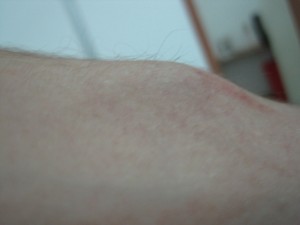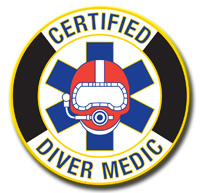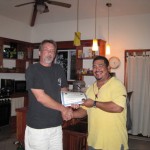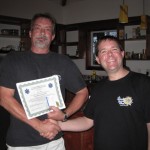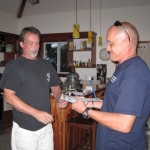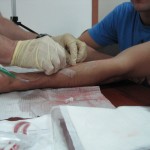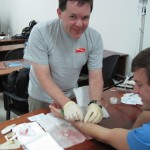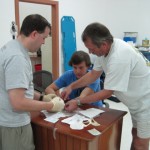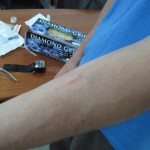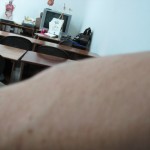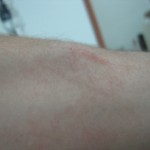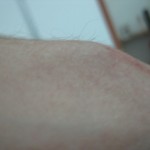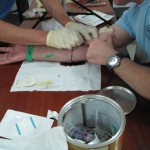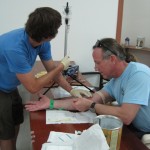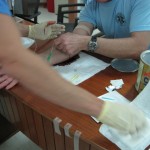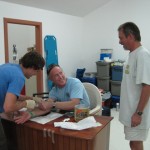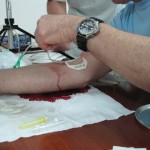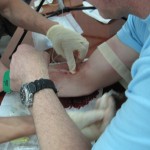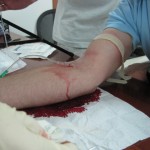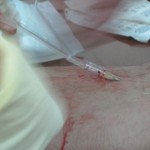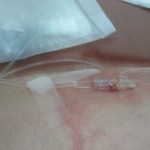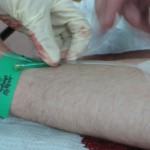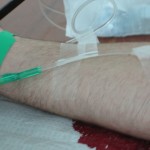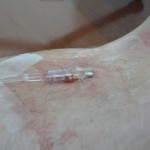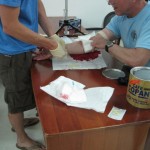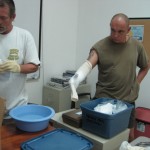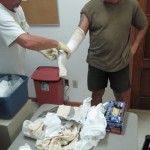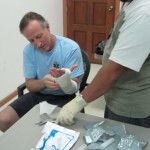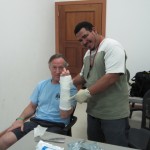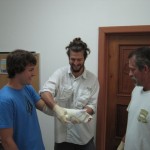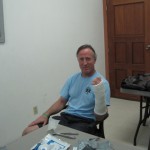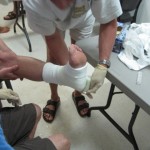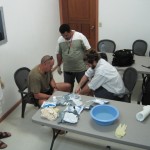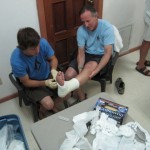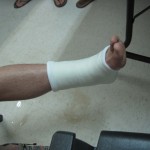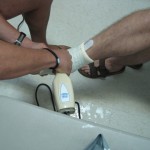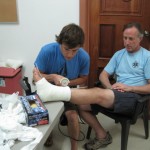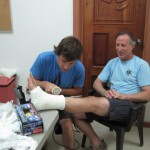I just received my copy of Diver Medical Technician by Cmdr Ron Ellerman from Amazon today. Ron taught my DMT course in Roatan, Honduras. I agree with Dr. Peter Holzhauer–it’s a great compendium on prehospital emergency care and diving medicine. Just a quick look through the text will show you that.
The text covers
- History of Diving and Hyperbarics
- Roles and Responsibilities of the Diver Medic
- Diving Physics
- Anatomy & Physiology
- Patient Assessment
- Decompression & Recompression tables
- Hyperbaric Chambers
- Pressure Injuries/Illness
- Medical and Marine Injuries
- Airway & Breathing Maintenance
- Vascular Access & medication administration
- Soft Tissue Injury
- Musculoskeletal injury
- Cardiac Emergencies
- Related Medical Procedures
- Saturation Diving Issues
- and “Live Bait”
Of course, I’m also quite happy that Ron included one of the photos from my DMT course. Page 11-39, figure 11-19 has a great photo of an infiltration at an IV site. Here’s the color version.
Ron kindly left out that the infiltration I took a photo of was also my fault. Sorry about that, Bryce. It was a great learning experience, even though it was painful. If you want to see more of the photos, click here for our IV practice lab.
Ron also included one of my photos showing a jellyfish sting. [Page 9-32, Figure 9-26]
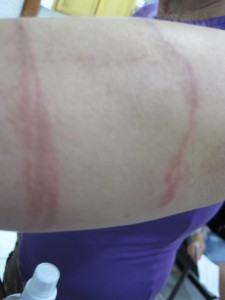
Unlike the IV, I only took the photo here. Unfortunately, this diver was stung by some jellyfish tentacles.
If you’re interested in the DMT text, the DMT program or just being better prepared while diving, check out Ron Ellerman’s Diver Medical Technician text. You can also sign up for his DMT program at www.divermedicaltechnician.com
